
|   |

|   |
Natya Darshan Day 2 - Sukanya Kumar e-mail: sukanya.kumar91@gmail.com Photos courtesy: Natya Darshan January 2, 2020 The final day of the conference began with a graceful presentation by students of Binesh Mahadevan that recalled the South Indian tradition of Kolattam danced in a procession from the Madaveedi to the entrance of Bharatiya Vidya Bhavan. Opening with the brief cultural history of Karnataka under the rule of Chalukyas, Hoysalas, and the Vijayanagar empire, Adithya PV introduced the origins of the Mysore style during the reign of Mysore Wodayars. "The Mysore bani follows the dashavidhaadavus," he said. Mummandijaradavu, Phaniadavu, Koothadavu, and Beesadavu were some of the interesting ones demonstrated. "We also use some unique adavus exclusively for certain nrithyabandas," he introduced the demonstration. 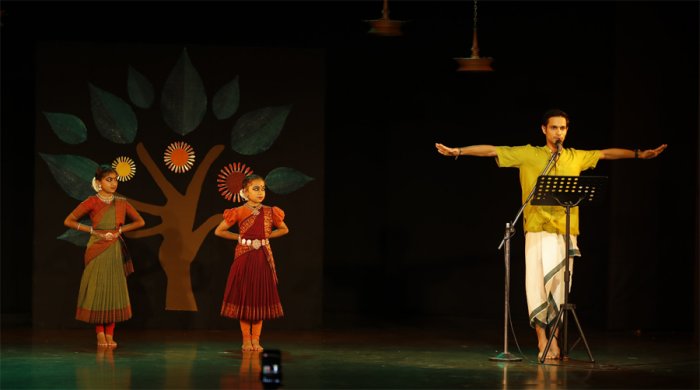 Adithya PV 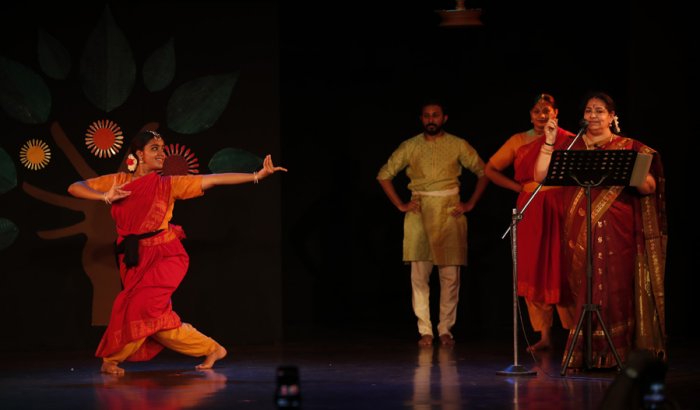 Madhumathy Prakash Madhumathy Prakash and her students presented select adavus from the Kancheepuram Bani in the second half of the 'Interactive Adavus' session. Some rare versions of the Simharaadavu, Mandi adavus in five jathis, Sutraladavus were interesting "influences that Yellappavaadiyaar took from sculptures of Ekambareshwarar temple," explained Madhumathy. She attributed the finishing of the teermanamadavu in an obtuse angle, as a unique element of Guru Udupi Laxminarayan. Karuna Sagari Venkatachalam, presently under the mentorship of Bharatanatyam veteran Malavika Sarukkai, presented a very interestingly titled session 'You dance without missing a beat' based on Thevarams. Commencing with 'Koodiyalayam' by Sundarar, Karuna elaborated on how the poet was so close to the Lord Shiva that he considered it his right to even question him. Set in ragam Kambhoji to the traditional Pann Takkesi, the jathis were "complicated enough that one could miss a beat," as claimed by Karuna. The second thevaram by Sambandar in Megharagha Pann set to ragam Neelambari was beautifully delineated specifically with visualizations of a bee that drinks the Lord's name so much that it changes color and sings Sevvazhi Pann, becoming a new person. The swarams composed by Jyothishmathi Sheejith added beauty to the musical melody. The concluding Appar Thevaram in ragamalika, a composition of Late Suryanarayanan picturized the Gangadhara form of Lord Shiva as explained in the Thiruthandakam. "Unlike common portrayal of tying up Ganges to control her, the sculptures show that Lord Shiva unties his hair strand to receive and channelize her instead," Karuna pointed out the difference in approach.  Karuna Sagari 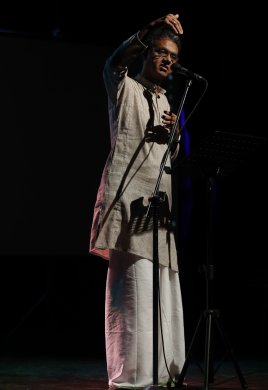 Dr. Rajkumar Bharathi After poignant poetry came mesmerizing music. Dr. Rajkumar Bharathi, musician, composer and lyricist shared his thought process behind some of his musical creations for dance in another intriguingly titled session 'See the music hear the natyam.' Using excerpts from his compositions, Karna, Turning Point, Panchali Sabadam, and Jonathan Livingston Seagull to name a few, he explained the importance of processes like choosing ragams, using pauses, instrumentalization, pitch, etc. A notable example was his usage of the swaram 'Ma' in repetition to enhance the word 'Maamaa' or uncle when composing a tune for Shakuni, the evil uncle. "Art is bigger than the artiste and composing is always a cooperative effort," he concluded with humility, thanking the contribution of various dancers, musicians and recording engineers like Sai Shravanam and H. Gobi. Leela Samson walked onto the stage with grace and Úlan, a trailer to her presentation 'The Stillness Within.' An intellectual artiste that she is, Leela Samson started with a disclaimer that she is not going to speak about spirituality due to its ephemeral quality. "The centering of body and mind when performing adavus is akin to finding the still point in the turbulence of life," she said. She commenced with 'Ardhanareshwaram' by Muthuswamy Dikshitar preceded by slokams in praise of the same form in five select Ghanaragas. "This piece underlines and undermines the advaitha quality," she introduced. Kshetrayya padam 'Ekkadi Nestammu' set in ragam Saranga to misra chapu talamwas based on vairagya bhava while the next composition from Purushasuktam was founded on how the primordial sacrificed its body to create the micro and macro cosmos. Based on Hindustani raag Lalith Pancham, this composition by Madhup Mudgal was a fitting penultimate piece. The finale, also a composition by Madhup Mudgal, was a Bhajan where Saint Kabir reminds his mind that there are a million shrines in this body. Leela Samson's maturity, brilliance and simplicity transcended beyond the physical, giving dynamism to the stillness within. 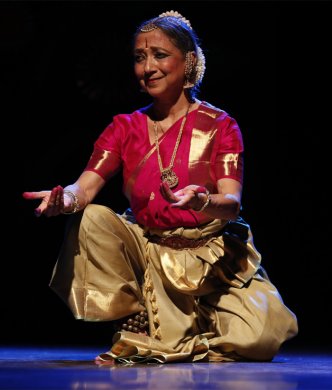 Leela Samson 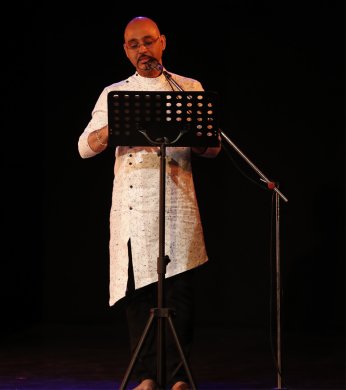 Madurai. R Muralidharan Composer, dancer, choreographer, lyricist, playwright and director, Madurai. R Muralidharan presented the first half of 'Atma Laya - emotions in laya,' with his daughter and disciple Kavya Muralidharan performing the demonstrations. He chose excerpts from different pieces set in talams like Chatusra Jathi Triputa and Misra Jathi Druva, that he has used in his compositions depicting bhavams of sringaram, bheebhatsam and adbhutam in the lyrics. The advantage of being both the lyricist and music composer for the pieces was clear in the cohesiveness of the compositions presented. Sarvesh Karthick on percussion and G.Srikanth on vocal provided excellent support to the presentation. Nithyakalyani Vaidyanathan presented the concise and crisp second half of Atma Laya addressing the "confluence of laya with the soul." Utilising excerpts of Nandi Chol, Hemavathi Jatiswaram in misra chapu, Shamba Sivayanave in Khamas, varnam Swami naan undan adimai, Nee indamaayam, Enthaninne, and Swami ninnekori, Nithyakalyani briefly explained the nuances of these compositions and the strength of the artistic choices seen in choreography of their nritta sections. "Ability is to create complex rhythms, but mastery is to synthesize the calculations with geometry of performance," she expounded. Clad in elegant pink, Shruthipriya Ravi's demonstration was energetic and beautiful while Nithyakalyani's mastery over talam was explicit in her presentation. The jathi consisting of only theermana adavu sollukattus was a specifically interesting choice for the lecture demonstration.  Nithyakalyani Vaidyanathan 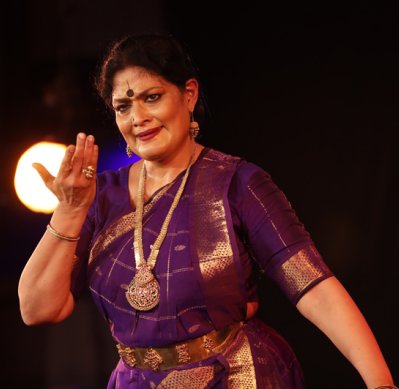 Geeta Chandran "Bharatanatyam is very old and thus a lot has already been done," clarified Geeta Chandran, cautioning young creators about the concept of 'novelty' in Bharatanatyam. Emphasizing the importance of training and influences, she commenced with Nirgeet, "a stepping stone before a Drupad." She then explored the concept of celibacy in an excerpt from her production 'Gandhi: Warp and Weft.' Furthering on suggestions about exploring abstract concepts effectively through a traditional medium, Geeta Chandran also presented an excerpt from Anekanta that explicated the idea of multiple truths that are "equally valid and equally relevant." While sharing the process of creating Ravana, she elucidated how a character deemed as 'black' and not 'white' could be discovered through a gray lens. Her characterization of Ravana, as a handsome powerful respected king of a wealthy empire could make him an aesthetic choice and eligible partner to anyone, was impactful and convincing. She concluded with a Kabir Bhajan composed by Sudha Raghuraman on popular request from the audience. With this, the conference section of the 19th edition of Natya Darshan, 'KADAMBA - the flowering path' ended on a strong note, with convener Priya Murle acknowledging the contribution of her team in making it a grand success. The thoughtful artistic selections of Priya Murle, support by Kartik Fine Arts, the generosity of sponsors and the participation of the dance community contributed to the luxury of witnessing such a conference packed with myriad topics presented by artistes with varied experiences and perspectives. Sukanya Kumar is a practitioner of Bharatanatyam and Kathak genres trained under illustrious gurus. She is a Creative Culturist, and choreographer skilled in implementing electronic media technology in her productions to propagate social messages. She has a BSc in electronic media, MFA in Bharatanatyam, MBA in Educational management and MFA in Dance and Technology. |